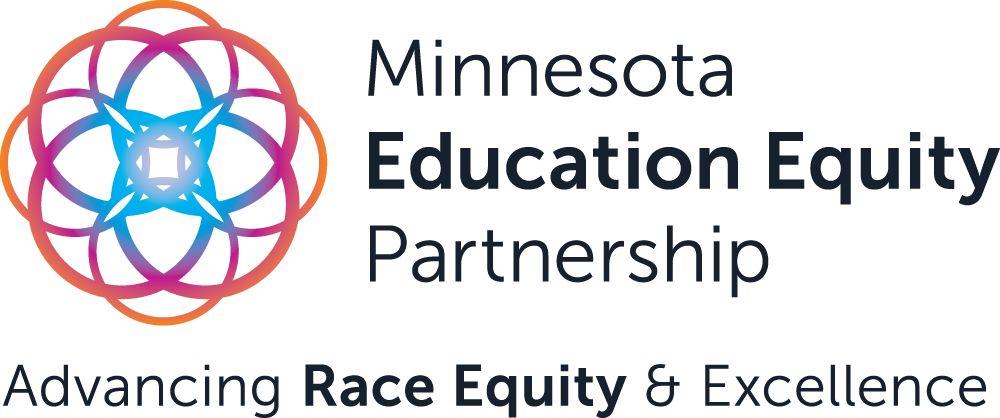
Recent Minnesota test scores outline an opportunity to transform education as we know it
The declining math and reading scores of Minnesota’s fourth- and eighth-graders, outlined in the National Assessment of Educational Progress report released earlier this week, is about more than Covid. This is an urgent call and an opportunity for us to rethink the very purpose of education and the pedagogy supporting it.
First of all, of course Covid impacted the landscape of learning in Minnesota. To be honest, that is like watching a Captial One commercial—in other words, it’s a no-brainer.
The deeper issues and opportunities however will take not only brains but systemic brawn to do the heavy lifting of moving away from the dead weight of traditional pedagogy to vigorous education rooted in Culturally Validating Pedagogy (CVP).
This is a time for us to change our current mental models and build new systems that honor and uplift the humanity of each student, especially Minnesota’s underserved POCI students.
Culturally Validating Pedagogy (CVP)—rooted in the educational environment, instruction, and content —is a critical component of that change. This is how we equip educators to fulfill their vocation and support students in becoming their full, authentic selves.
Reevaluating education’s core values
At the time the pandemic first became a central topic in education I was serving as a central office district administrator for a predominant suburban district. I remember vividly how the school board, superintendent, and cabinet literally overnight raced to provide traditional pedagogical methods including instruction and content in an online format to address public safety concerns.
I appreciated their logic, but I recall pushing back as I recognized this as a pivotal moment in what needed to be a new era of pedagogy (environment, instruction, and content) in our state, country, and world.
As the director of Educational Equity, I recognized this as an opportunity to reimagine pedagogy—which had been a theme throughout the Reimagine work recently done across much of the state.
Historically, much of the pedagogical process has been connected to the mechanical narrative of content that required memorization, not self-actualization.
Educating students has often been an act of depositing a dominant identity rather than personal enlightenment. Students historically have been viewed as the depositors while teachers were the systemic banking agents required to complete the transaction of dominant cultural values and information (knowledge).
The scholar Friere writes about this process in his book The Pedagogy of the Oppressed as “Banking Theory.” This approach makes sense if the purpose of education is to norm, conform, and design human beings to fulfill societal roles that governments and systems desire them to comply with.
However, in this moment of transition to distance learning, we faced a unique time in our geopolitical landscape alongside the horror of a global pandemic and economic crisis.
At the same time, we as Minnesotans were faced with reevaluating the core values of our own humanity as we watched radical changes in our economy, the loss of lives of countless people due to COVID, and the continuation of racial hatred and systemic crimes perpetuated against Indigenous communities and communities of color being publicly displayed in living color—including what felt like endless murders of community members of color at the hands of government-sanctioned authorities.
I offer this context because learners are not an empty slate that must be filled with dominant culture-valued information (knowledge). The previously mentioned factors and numerous others filled that slate with reality before historically white dominant culture educational practices even engage with a student.
Learners are complex human beings that are whole and complete. Please don’t take this out of context, obviously, there is value in being able to communicate the essence of our humanity with the world around us, and educational standards in mathematics and reading are two mechanisms that can help us accomplish this communication and building of society.
But the current reality of our P-20 learning population needs more than “I told you so” and content experts. We need purpose and validation of our very humanity in the learning spaces.
Building Culturally Validating Pedagogy
As we now begin to go back to schooling as usual in many of our districts it is important to recognize the traditional forms of educating students are simply not producing the results we want for each of our children across almost every racial category, including our white students who are going up alongside our children of color and Indigenous students in an ever-changing world.
We must move to a place of Culturally Validating Pedagogy (CVP), which is outlined in the five basic building blocks of the CLEAR Model that I first introduced into the educational landscape in 2009.
The Five building block are:
Cultural
Emphasizes the human purpose of what is being learned and its relationship to the student’s own culture.
Learning
Encourages students to make choices in content and assessment methods based on their experiences, values, needs, and strengths.
Equitable
Respectful learning environments in which a student’s racial, social, linguistic, ethnic, and cultural diversity is valued and contributes to the learning experience.
Achievement
Includes multiple ways to represent knowledge and skills and allow for the attainment of outcomes at different points in time.
Responsive
Through positive relationships, vigorous learning experiences are created involving higher-order thinking and critical analysis used to address relevant, real(ness) world issues in an action-oriented manner.
What if instead of historically white-dominant standards applied to education the entire purpose of education focused on equipping individuals with (Knowledge + Skills) so that they could transform themselves as learners?
The very process could embolden students and increase their Will to bring about social justice by providing each unique learner with the necessary tools, which would include Capacity in math and reading to bring about radical structural changes that support a democratic lifestyle and equitable solutions. This is how we can through CVP build Capacity for sustainable change, (Knowledge + Skill) x Will = Capacity!
The CLEAR Model and Capacity Equation are copywritten tools of Intercultural Inovations Inc. (I3) and are utilized and endorsed by MnEEP.
To learn more please visit www.theclearmodel.com or contact Dr. Hillstrom at rhillstrom@mneep.org.

Dr. Rev Hillstrom is one of this country’s foremost Indigenous scholars leading systemic change for educational excellence and equity. Through the pillars of the CLEAR model (Culture, Learning, Equitable, Achievement and Responsive) he guides systems in generating the equity consciousness needed for conceptual, behavioral and structural transformation.
